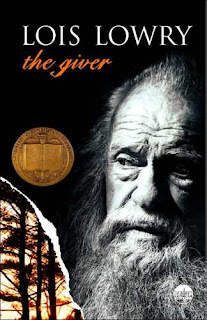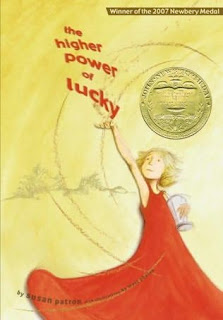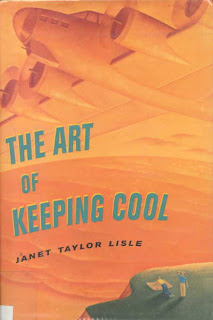
1. BIBLIOGRAPHY
Lowry, Lois. 1993. THE GIVER. New York, NY: Bantam Doubleday Dell Books for Young Readers. ISBN 0440219078
2. PLOT SUMMARY
Set in the future, THE GIVER follows a boy named Jonas as he enters his twelth year of life in a utopian society. In order to eliminate hard times and dissention, individuality is replaced with sameness. There is no war, no pain, no memory, no fear, and no hope.
Upon their twelth year of life, each child is assigned a role in the society. Jonas has been designated as the Receiver of Memory to be trained by the Giver. As part of that training, Jonas begins to receive all of the memories before the time of sameness. Throughout this painful and emotionally draining process, Jonas begins to realized how empty and shallow his "perfect" society is.
3. CRITICAL ANALYSIS
It is a question that we wrestle with from generation to generation: how can we create the perfect society? Wouldn't it be great to have no war, no sickness, no crime, and no fear?
Lois Lowry gives us a glimpse of her perspective on this. The topic here is weighty and, initially, difficult to wade through. Some of the material is fairly mature and this book has made a few banned book lists. In an elementary school, I know some of the parents of 4th and 5th graders would want to discuss why a book in their library talks about "stirrings".
Reading what Jonas goes through when he receives some of the memories is painful. It is a vivid reminder of the realities of this life. However, there are memories that he experiences that make us realize why "sameness" does not work: no love, no choices, no feelings, no passion. It makes one realize that we cannot have all the good of this world without having some of the bad.
In my humble opinion, the first few chapters of any fantasy book are a bit confusing. There are new worlds to navigate and unfamiliar societal structures that force the reader to really focus. About a third of the way through, after characters have been introduced and we get a handle on the society, this book really starts to flow. More and more details emerge regarding the not-so-perfect perfect society.
Lowry's inclusion of "release" is also bound to set off alarms. Release is the utopian society's form of euthenzia. The old, the punished, and excess children are targeted. Release is conducted secretly, but with no feelings present in the society, it is looked upon as a joyful journey, not a death.
Jonas' struggle with feelings and memories is fresh. We forget the cold of snow or the brilliance of color or the pain of our first cut. Jonas is a baby foraging in a new world and we get to experience some of that ourselves.
The ending is a bit ambiguous. Jonas rescues a baby designated for release and they escape out of the utopia. The reader is led to believe that they survive, but that is left up to the imagination. Fortuantely, there is a sequel that confirms this.
I would not recommend this to many at the elementary level. This book is geared toward a more mature young adult reader. Middle school and high school would be the place for this book.
Several literary points are present here:
1. There is a sense of realism, in that this book could happen.
2. This is a "problem" novel, in that the problems that Jonah wrestles with strike a chord in the mind and heart of the reader.
3. There is a sense of controvery, especially with the depiction of euthensia and stirrings toward sex.
4. The readership is definitely for higher-aged elementary children or middle/high school children.
4. REVIEW EXCERPTS
* Starred review from SCHOOL LIBRARY JOURNAL: "The author makes real abstract concepts, such as the meaning of a life in which there are virtually no choices to be made and no experiences with deep feelings. This tightly plotted story and its believable characters will stay with readers for a long time."
* Starred review from PUBLISHER'S WEEKLY: "Winner of the 1994 Newbery Medal, this thought-provoking novel centers on a 12-year-old boy's gradual disillusionment with an outwardly utopian futuristic society; in a starred review, PW said, 'Lowry is once again in top form... unwinding a tale fit for the most adventurous readers'."
5. CONNECTIONS
*Perhaps a good tie-in to something middle and high school children are well aware of is the attempt of Hitler to create a utopian society. Students should do a bit of research and do a compare/contrast of Hitler's ideals and the ideals set aside by the Elder's in Jonas' society.
*A good book-link is BRAVE NEW WORLD by Aldous Huxley. Although a controversial book, this makes one think. Lowry included many of the same things in her book that Huxley did (eliminating poverty and war, for instance), but went the other way as far as societal impacts. What was the difference in Huxley's society as opposed to Lowry's?
Huxley, Aldous. 1977. BRAVE NEW WORLD. Flamingo; New Ed edition. ISBN 0586044345





